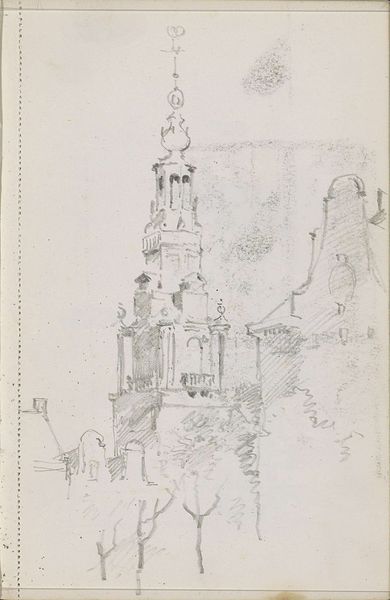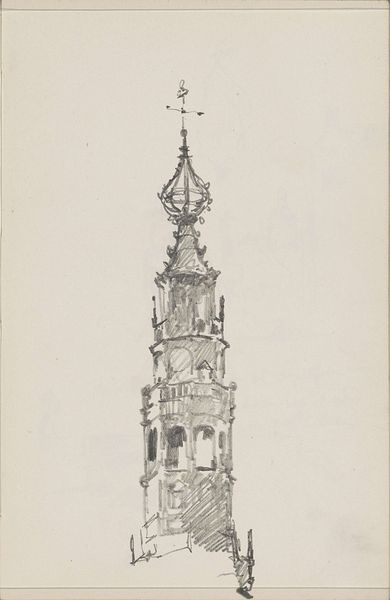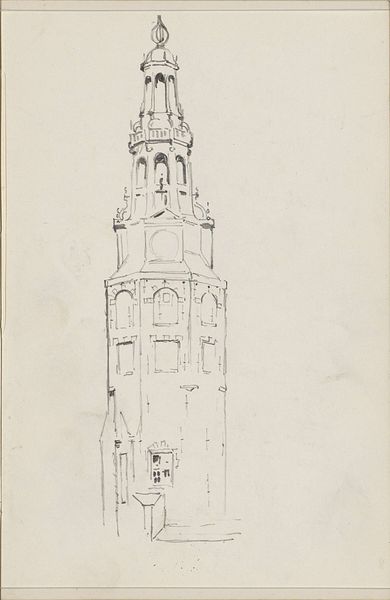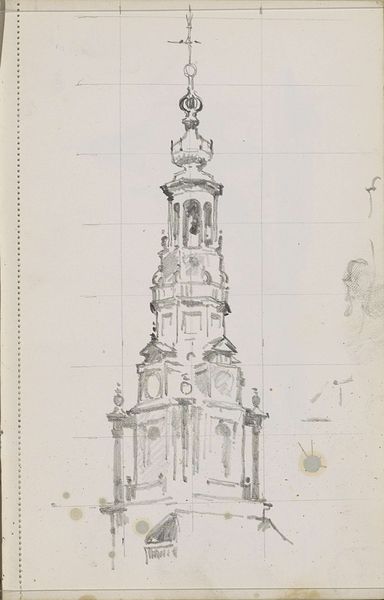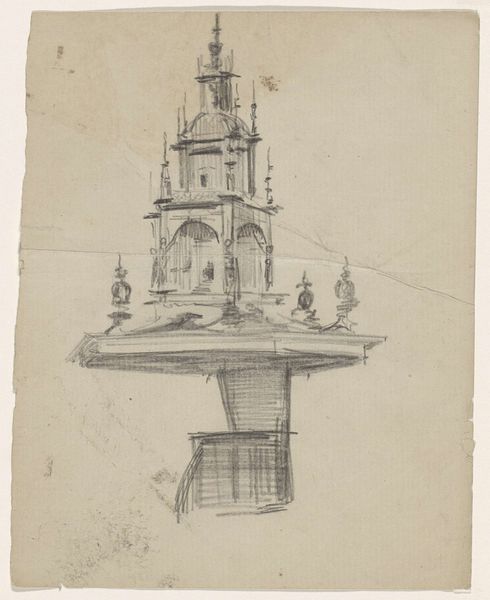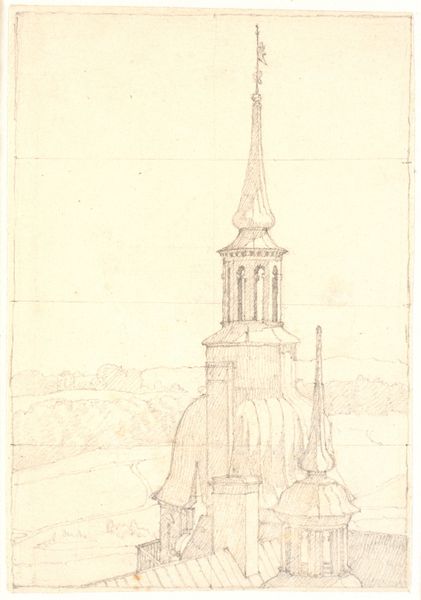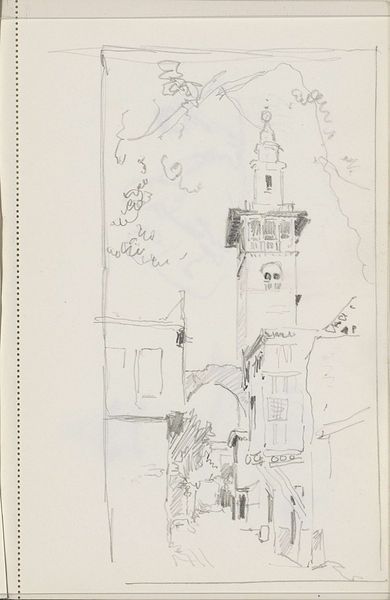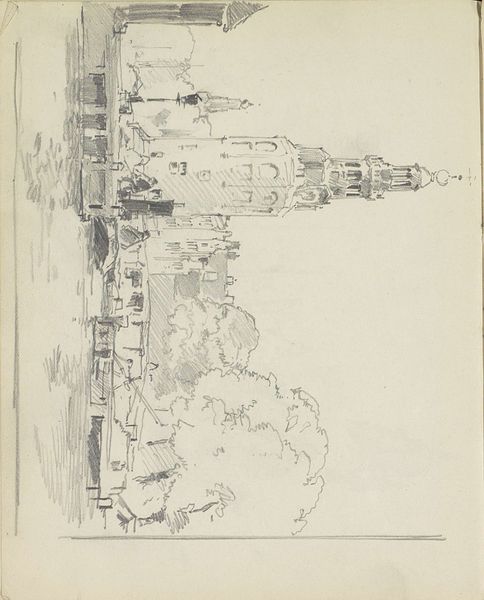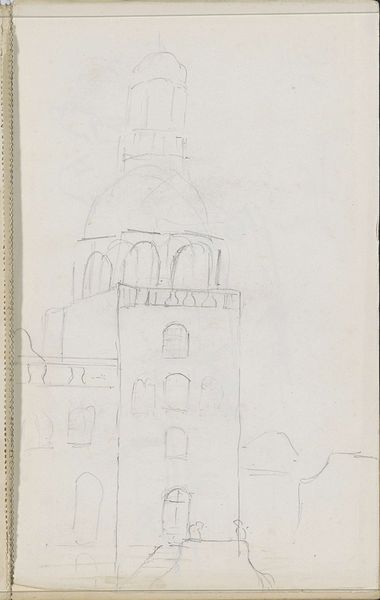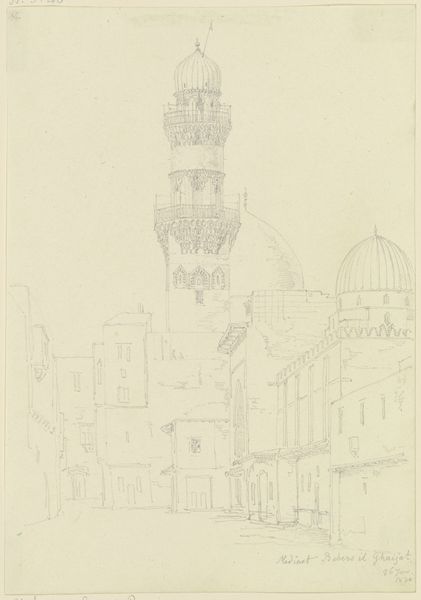
drawing, paper, pencil
#
drawing
#
landscape
#
paper
#
geometric
#
pencil
#
cityscape
#
realism
Copyright: Rijks Museum: Open Domain
Curator: Looking at Cornelis Vreedenburgh's "Tower of the Old Church in Amsterdam," created sometime between 1890 and 1946, what's your initial impression? Editor: It has an airy quality, almost like a ghostly apparition against the stark page. The artist opted for a light touch with the pencil. Curator: Indeed, the choice of medium and technique directs our attention to the artistic process. The artist's hand, the specific grade of pencil used, and the texture of the paper become paramount in understanding the piece. It's interesting how a seemingly simple drawing encapsulates such a rich engagement with materials. We are looking at the physical, constructed nature of representation. Editor: And what does that representation tell us about Amsterdam's cultural and social history at this time? How does this tower function as a symbol, within a civic context, in relationship with religion, power, and artistic movements? The Oude Kerk itself, as a physical site and an institution, holds centuries of layered meaning. The choice to depict just the tower, rather than the full church, invites consideration. Curator: Precisely! What was the economic climate for artists producing cityscapes at this time? Were they dependent on commissions from wealthy merchants, or engaging with a broader market? The relative simplicity of this work and the accessible medium implies an interesting dynamic in art patronage. Editor: And who might have been the intended audience? Was it for personal study, public consumption, or for sale as souvenir or tourist material? The Tower, being a key civic landmark, may communicate a broader visual identity that artists participated in shaping. Curator: Thinking about materiality and labor – did the artist create this *en plein air*, grappling with the elements and social encounters, or was it a studio recreation from preliminary sketches? Understanding those decisions tells us about the physical realities shaping artistic production. Editor: I'd also look into archival photography and maps of Amsterdam at that time. Visual parallels can illuminate artistic and historical processes—documenting material culture beyond this image. What architectural alterations were occurring in the tower or its immediate environment? Curator: Very insightful. Both materiality and social history work together to construct a powerful artistic moment. Editor: Yes. We can deepen the conversation through multiple lines of investigation. It offers more than meets the eye.
Comments
No comments
Be the first to comment and join the conversation on the ultimate creative platform.
